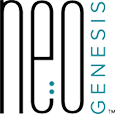Chemotherapy Rash

“I would like to say thank you so much for sending the products. I am completely in love. As you know I take chemotherapy, called Rituximab. The infusion causes a serious rash. I have applied Nystatin powder prescribed by my doctor, but that requires at least a week for some relief and several weeks to totally heal. After just one treatment visit and the products they gave me (Recovery + Intensive Moisturizer) I am in less discomfort.” – Holly B.
FEATURED VIDEOS
CHEMOTHERAPY RASH
During chemotherapy, patients often experience a range of side effects that can affect their skin. Rashes are a common side effect of Rituximab chemotherapy, a type of cancer treatment that targets and destroys certain types of immune cells. These skin rashes can vary in severity, from mild irritation to more serious conditions that require immediate medical attention.
Symptoms of skin rashes during chemotherapy may include redness, itching, flaking or peeling skin, bumps or blisters, and dryness. In some cases, the rash may also be accompanied by pain or tenderness. These side effects can not only be uncomfortable but can also impact a patient’s self-esteem and quality of life.
To manage skin rashes during chemotherapy, we suggest using a gentle, oncology friendly Cleanser, Recovery serum and a moisturizer to help keep your skin hydrated. It is also important to avoid harsh chemicals, sun exposure, and tight clothing that may irritate the skin further.
It is crucial to practice good skincare habits during chemotherapy, such as avoiding scratching or picking at the rash and using a gentle touch when washing and drying your skin. It is also recommended to wear loose-fitting, breathable clothing made of soft fabrics like cotton.

“I would like to say thank you so much for sending the products. I am completely in love. As you know I take chemotherapy, called Rituximab. The infusion causes a serious rash. I have applied Nystatin powder prescribed by my doctor, but that requires at least a week for some relief and several weeks to totally heal. After just one treatment visit and the products they gave me (Recovery + Intensive Moisturizer) I am in less discomfort.” – Holly B.
FEATURED VIDEOS
CHEMOTHERAPY RASH
During chemotherapy, patients often experience a range of side effects that can affect their skin. Rashes are a common side effect of Rituximab chemotherapy, a type of cancer treatment that targets and destroys certain types of immune cells. These skin rashes can vary in severity, from mild irritation to more serious conditions that require immediate medical attention.
Symptoms of skin rashes during chemotherapy may include redness, itching, flaking or peeling skin, bumps or blisters, and dryness. In some cases, the rash may also be accompanied by pain or tenderness. These side effects can not only be uncomfortable but can also impact a patient’s self-esteem and quality of life.
To manage skin rashes during chemotherapy, we suggest using a gentle, oncology friendly Cleanser, Recovery serum and a moisturizer to help keep your skin hydrated. It is also important to avoid harsh chemicals, sun exposure, and tight clothing that may irritate the skin further.
It is crucial to practice good skincare habits during chemotherapy, such as avoiding scratching or picking at the rash and using a gentle touch when washing and drying your skin. It is also recommended to wear loose-fitting, breathable clothing made of soft fabrics like cotton.





